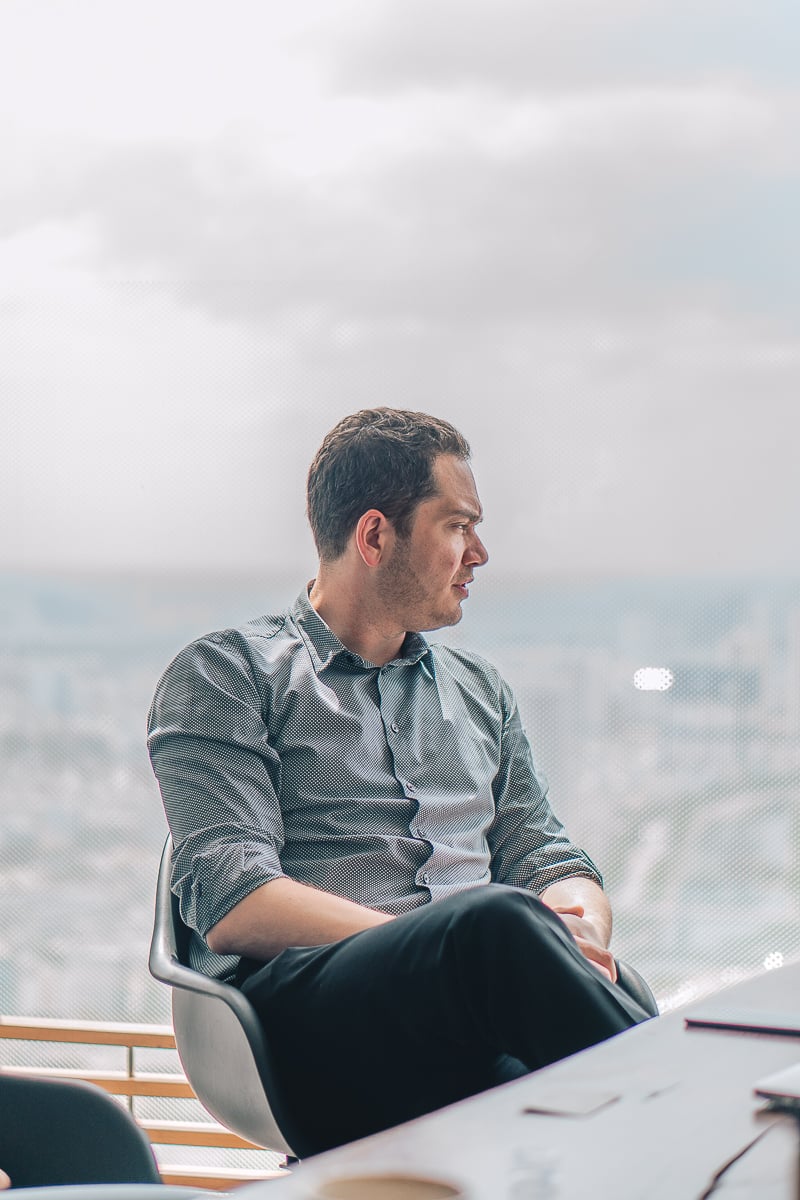Vietnam is recording higher than ever rates of digital engagement across industries—and it’s getting trickier for brands to adapt. In response, Thue Thomasen and Aske Ostergard, founders of the boutique market research agency Decision Lab, are working together to introduce a new type of market research for the digital age. It’s one built to operate in and continually adapt to the ever-changing automated landscape of Southeast Asia. So, we headed over to their office in Ho Chi Minh City’s Bitexco Tower to learn more about the future of data and research in the region.
Why start a business in market research? What’s the need and demand in the market?
Aske: We launched Decision Lab with a team that came from our management buyout of Epinion, a Danish market research company that we helped launch operations for in Southeast Asia. The risks we took setting up a boutique agency have taken time to come to fruition but, finally, they are starting to pay off. We have more brands coming to us with requests that match our profile and capabilities. In fact, right now it’s more than we can handle.
We’ve established the main driver of our business, but we’re still in the validation period of testing offerings with online videos, packaging, and new concepts. We always stick to our basic principles—being flexible and agile, while staying connected to the consumers. And most importantly, we are decision-focused, meaning we propose solutions that lead to actionable decisions.
In the region, consumer behavior is changing significantly. Identifying the ways that people now interact with brands is very different than just five to ten years ago. Retail in the traditional sense has changed dramatically, evolving beyond supermarkets and malls. And in tandem with that, the Vietnamese have been adapting to technology. Digital competency has undergone tremendous growth. Tools, apps, and bitcoins are being adopted at the same pace here as elsewhere in the world.
What does becoming more agile mean for brand owners?
Thue: When a company releases an annual marketing strategy to kick off the year, how soon does it take for them to throw it away? For Decision Lab, designing a marketing strategy means defining the playing field while setting attainable, flexible milestones for a shorter duration of time. It’s not about planning rigid campaigns for each season at the very beginning of the year.

With digital tools constantly evolving, it’s unrealistic to create and follow a business plan for much longer than a few months. Instead, it’s better to set simple strategies that are faster to realize. We also rely on fewer in-depth studies preferring to focus on more iterative research that can generate insights on a recurring basis, rather than just once.
Previously, market research was about conducting as much primary research as possible—which meant gathering lots of fresh data. Many market research reports drew as much as 80% of their data from primary research. That’s a large amount of manpower and resources dedicated to research. Today, market research is about leveraging secondary data—the kind of data that has already been collected. And so much of the work we do now is mapping data across different sources and distilling it into actionable insights. And doing so quickly.

In this new digital age, many brands don’t actually ever meet the consumer. The most effective way we can bridge that gap between brands and consumers, then, is to report faster and offer quicker turnarounds. Today, brands are misusing time and resources by relying on delayed insights. Legacy market research companies move slowly and work on big, complicated studies. That is not what brands need anymore. They need faster, more agile research while retaining a focus on gaining insights that can optimize their overall strategy and approach to marketing. This means engaging with new technologies, new trends, and new ad formats. Our mission is to support this. We are following a lean startup development process, with incremental and fast changes to our research solutions. In 3-5 years, we want to see our team grow and to help clients in the whole region embrace agile marketing which will help them adapt faster to their consumers.
What sort of brands are working with Decision Lab? What sort of needs and challenges do they come to you with? How does your team respond to them?
Aske: Right now it’s mostly larger companies. In time, we also want to reach small- and medium-sized companies by offering lower costs and shorter time commitments. That’ll come once we offer products and services that require less human involvement while leveraging more efficient technology and processes. From our previous market research experiences, we now understand the need to create a new model for market research—one that is agile enough to produce test results faster and more often. As a brand, if you’re willing to adapt after a short period of data collection, you can improve your performance during the research process. Decision Lab offer a change of pace from other agencies, and we encourage our partners to learn and become more agile on the go.

What sort of personalities do you look out for on an ideal team?
Thue: Decision Lab was fortunate to start off with a strong and experienced team. We spent lots of time together before forming the new company. We each share the same vision and passion while trusting each other’s work 100%. And we know each other’s capabilities and limitations.
We also recently introduced the Market Research Consultant Program (MRC), designed to bring in fresh graduates and young professionals to the company. There’s a new generation of Vietnamese out there and seeing how they are contributing to the country’s growth is inspiring. When the first batch of MRCs joined us last year, many of whom had just finished studying abroad, they were surprised to find themselves in a very open environment.

As a small company of 22 staff, we’re hoping to make the MRC program a dynamic company resource capable of bringing more young talented people onto our team.
What sort of company growth values and philosophies are encouraged at Decision Lab?
Aske: We apply the lean startup methodology to company building, and we encourage our team to think the same way when it comes to working with clients and partners.
Our company changes fast and we have to adapt to unique market trends every few months. When we grew Epinion to fifty staff, that’s when complexities began to arise. We began implementing procedures for developing career paths, hiring the right line managers, and creating streamlined policies. And if those foundations aren’t in place, then things can go sideways quickly.

So then, what is on the expansion roadmap?
Thue: Most startups ask how they can multiply the growth of their company as quickly as possible. We have that same goal, but we understand we need to build the right foundations first. We could fly to another country and set up an office there right away if we wanted. But that would expose our Vietnam-based business, our home base, to a high level of risk. We could probably double our business if we opened in Indonesia tomorrow, but it wouldn’t set us up for exponential growth.
So right now, we are focusing our commercial activities on Vietnam. We have the framework to grow and we already have a physical presence elsewhere. But we’re building the foundation for more stability in Vietnam first. We can’t expand properly if we don’t have a strong backbone. Supporting employees in other countries adds a layer of complexity that we’re not ready for yet. Growth in new markets right now would duplicate those problems we experienced in the past.

Tell us one memorable experience building a company here in Vietnam that your team will never forget.
Thue: In January 2016, Decision Lab hosted a year-end party for the company. It was an opportunity for us to move forward into the future with our new team, and our new office space reflected that. And so, the theme of the party was to make it seem as if it was the company’s five-year anniversary. Aske and I showed up with grey hair. And at that time the new office was bare concrete with no furniture. That empty space, to me, felt symbolic of our team’s limitless potential.


